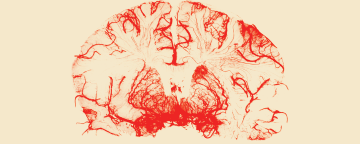Shawna Williams in The Scientist:
 In September of this year, pharmaceutical companies Biogen and Eisai announced that they were halting Phase 3 clinical trials of a drug, elenbecestat, aimed at thwarting amyloid-β buildup in Alzheimer’s disease. Although the drug had seemed so promising that the companies elected to test it in two Phase 3 trials simultaneously, preliminary analyses determined that elenbecestat’s risks outweighed its benefits, and the drug shouldn’t be moved to market. The cancellation “amounts to a further step in the unwinding of Biogen’s expensive, painful, and ultimately fruitless investment in Alzheimer’s disease (AD) drug development,” analyst Geoffrey Porges told Reuters at the time. Biogen’s misfortune is just the latest in a slew of late-stage Alzheimer’s drug failures. Six months earlier, the company had halted another set of parallel Phase 3 trials due to lack of efficacy of a different drug candidate, aducanumab (though after further data analysis, Biogen announced that it will seek approval for aducanumab after all). And between 2013 and 2018, Pfizer, Eli Lilly, Merck, and Johnson & Johnson all terminated Phase 3 or Phase 2/3 trials due to poor early results. Yet some Alzheimer’s researchers say they think they’ve spotted a silver lining in this cloud of bad news—a hint in the data from these studies about how future work might meet with more success.
In September of this year, pharmaceutical companies Biogen and Eisai announced that they were halting Phase 3 clinical trials of a drug, elenbecestat, aimed at thwarting amyloid-β buildup in Alzheimer’s disease. Although the drug had seemed so promising that the companies elected to test it in two Phase 3 trials simultaneously, preliminary analyses determined that elenbecestat’s risks outweighed its benefits, and the drug shouldn’t be moved to market. The cancellation “amounts to a further step in the unwinding of Biogen’s expensive, painful, and ultimately fruitless investment in Alzheimer’s disease (AD) drug development,” analyst Geoffrey Porges told Reuters at the time. Biogen’s misfortune is just the latest in a slew of late-stage Alzheimer’s drug failures. Six months earlier, the company had halted another set of parallel Phase 3 trials due to lack of efficacy of a different drug candidate, aducanumab (though after further data analysis, Biogen announced that it will seek approval for aducanumab after all). And between 2013 and 2018, Pfizer, Eli Lilly, Merck, and Johnson & Johnson all terminated Phase 3 or Phase 2/3 trials due to poor early results. Yet some Alzheimer’s researchers say they think they’ve spotted a silver lining in this cloud of bad news—a hint in the data from these studies about how future work might meet with more success.
In some of these trials, Alzheimer’s patients who were at earlier stages of the disease did better than those with more advanced cognitive decline, says Colin Masters, a neuroscientist at Florey Institute of Neuroscience and Mental Health in Australia who was not involved in the trials. This indicates that the key to finding an effective treatment might be to catch subjects before their condition advances too far, he adds. “The idea is very firmly in our minds that you have to go before the onset of cognitive decline, and you may be successful then in actually delaying the onset of cognitive decline by five years, which would be a major advance.” Thanks to the recent development of new detection technologies that yield more-precise and reliable measurements of circulating proteins, RNAs, and other molecules, the field is hoping to do just that.
More here.
